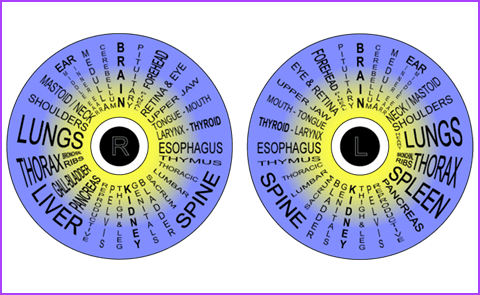Iridology
Iridology was developed in Hungary in the 19th Century and involves the study of the Iris of the eye (the coloured sector) and the Pupil, using microscopic analysis of the surface structures to determine the health of the whole body. Genetic strengths and weaknesses, levels of inflammation and toxicity, the efficiency of the eliminative organs all build up a picture of both current health status and predispositions.

Medical research in several European countries and Russia in particular has established greater acceptance of Iridology. In Russia, a trial involving 800,000 patients found Iridology to be 85% accurate in diagnosis; in South Korea clinical trials by the government found that on average Iridology was 78.2% accurate but with an impressive 90.2% accuracy in the diagnosis of digestive system disorders. By contrast, orthodox medicine considers other diagnostic techniques as reliable if they are accurate within a range of 30 - 40%.
The human iris and pupil is one of the most complex structures in nature and is one of the most visible parts. It has thousands of nerve endings which are connected to the brain through the hypothalamus, enabling to determine conditions in all organs and systems of the body.
The iris provides accurate information about our “constitutional” type, helping patients to understand their strengths and weaknesses, thus enabling them to become more aware of what they can do to help themselves in both the short and long-term. When bodily tissues become inflamed or congested, the iris is able to register the processes, enabling the Iridologist to determine the root cause of the current disorders. For example, a toxic digestive system may be responsible for problems such as migraines, skin disorders or joint problems.
